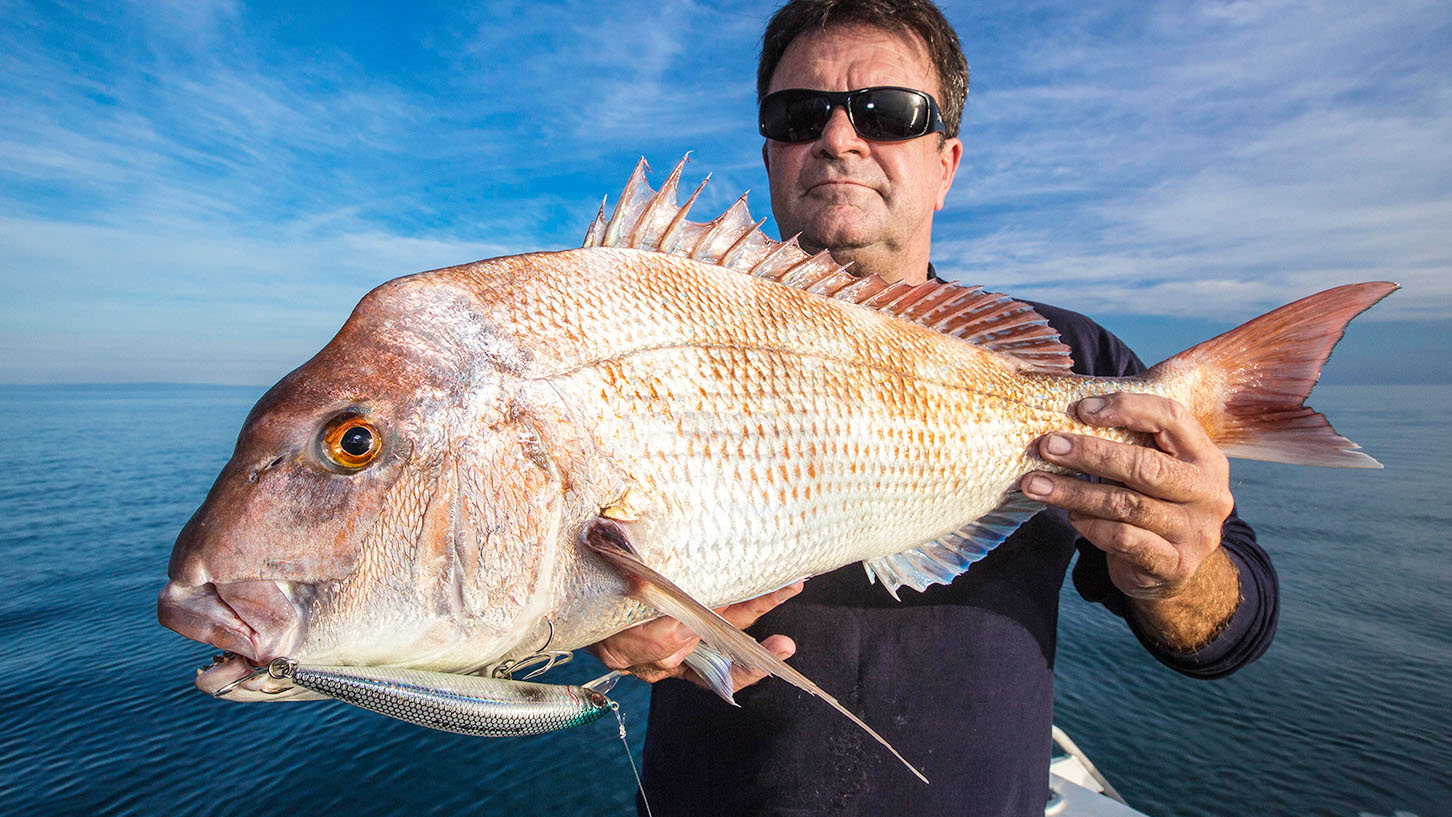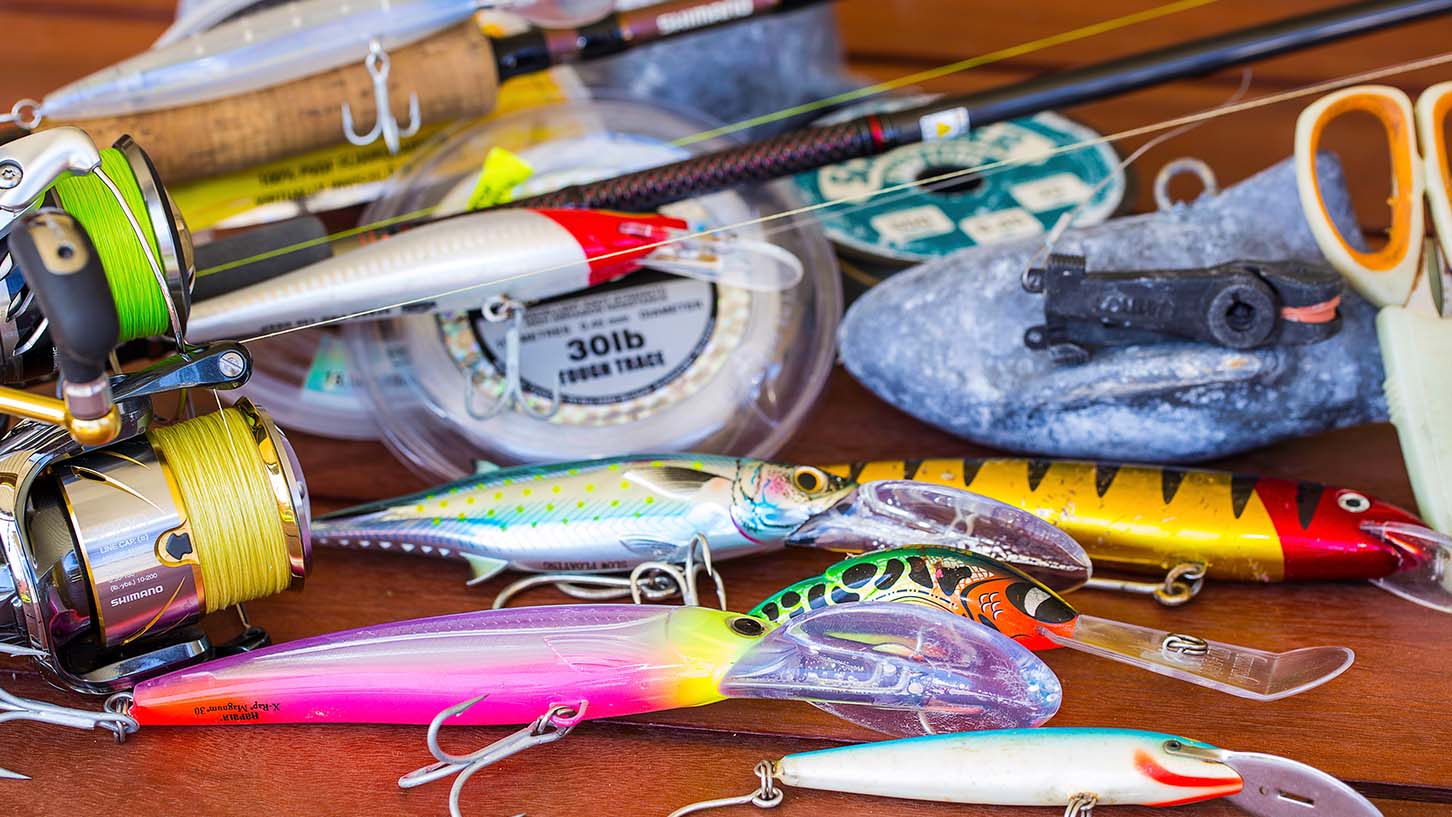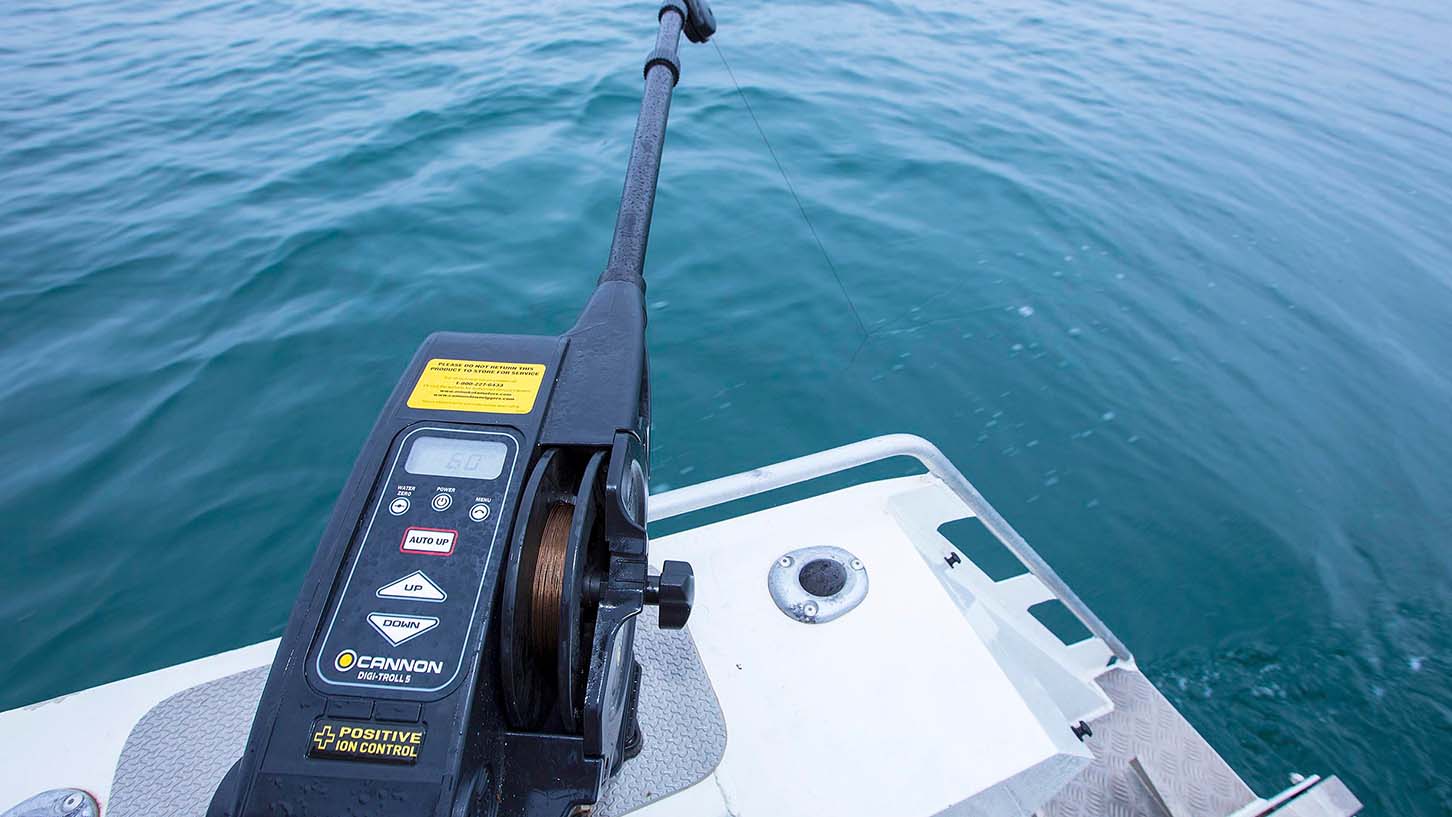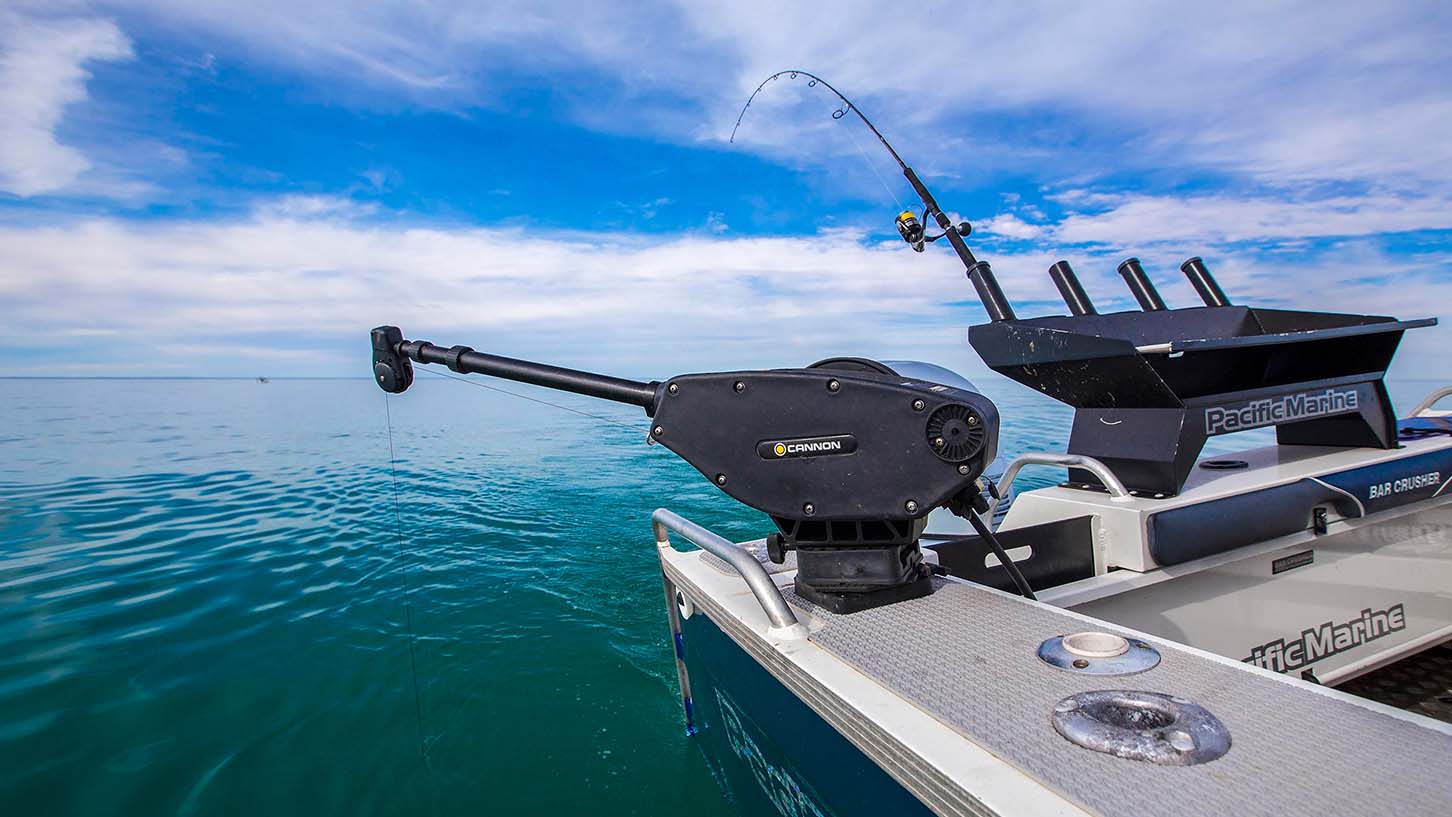| Your browser is not supported. | ||
|
Please browse our site using any of the following options:
| ||
How to use a downrigger to target snapper

Shane Mensforth shares tips and tricks on how to troll for snapper using hard body lures and a downrigger.
Back in fishing's so called 'good old days' there was one mainstream way of targeting big snapper - baiting up with fish or squid on a weighted rig, maybe setting up a berley trail, and then sitting back to wait for that tell-tale screaming run. There's no doubt it worked then and still works today, but for those who enjoy a more pro-active approach to their snapper fishing, targeting big red with a variety of fishing lures can be a great alternative.
Snapper fishing with lures
There's been plenty written about using soft plastics, and this is still a favourite way to do the job, but over the past couple of years many fisho's have been employing a variety of hard body lures with consistent success. Big snapper are highly efficient hunters, preying naturally on anything from crabs, prawns and other crustaceans to a variety of smaller fish. As long as it's presented in a lifelike manner, a hard body will nearly always attract big red's attention, so exploring the best ways to use this lure style is definitely worthwhile.
Unless you're operating in super-shallow water, working hard bodies effectively on bottom-feeding fish isn't easy - at least straight off the rod tip. Although snapper will hunt at most depths, depending on where the bait is situated, it's fair to say they do most of the feeding in the bottom quarter of the water column. This is where you need to have your hard body tracking to secure consistent hook-ups.
A downrigger of some sort is by far the most effective tool for deploying hard bodies in deeper water, and there are now plenty to choose from that suit South Australian situations perfectly. We have one electric downrigger and a couple of manual models that we use regularly, and there's no doubt they have proven invaluable on many occasions.
I'll point out from the start that rarely, if ever, do we go downrigging exclusively for snapper. We nearly always set out with soft plastics as the main weapon, but sometimes, and particularly when the fish aren't schooled up in numbers, using the downriggers can prove more effective.
We have eight or nine snapper grounds high in St Vincent's Gulf that hold big fish at various times of the year. Occasionally they are visited by large, tightly-packed schools of reds that are easily located on the sounder and will grab a well presented plastic without hesitation. These are fun times that often result in multiple hook-ups and quick boat limit catches. There are few things better in snapper fishing than dropping your softie over the side and knowing it will get crunched before reaching bottom.
However, when the snapper aren't around in big numbers, with just a few scattered fish prospecting the grounds for a quick feed before moving on, using plastics can be very hit and miss. You may pick one up here and there as you drift through the area, but it's often a long wait between bites - and we're not into long waits if they can be avoided! This is where a couple of downriggers with hard-body lures can really turn things around.
Three of our regular gulf snapper haunts are quite close together - maybe a kilometre apart - and if the sounder indicates scattered fish throughout the general area, we'll change lures and break out the downriggers without hesitation. When the snapper drops are relatively close to each other, there's often a considerable volume of interchange as the fish swim from one structure to another. Covering plenty of water is the key to locating snapper on the move, and downriggers certainly facilitate this.
One day late last season, just a week or so before the annual snapper closure, we had worked over every ground in the GPS. Just two ruggers sat in the icebox from six hours on the water, and our collective spirits were pretty low. We had sounded up 'bits and pieces' over most drops, but at no stage had we seen anything to get excited about. More as a last resort than anything else, we decided to downrig a pair of hard bodies around the two closest grounds before throwing in the towel and heading home. It's a tactic that had saved the day more than once in the past.
Once again, those 'bits and pieces' on the sounder were evident as we motored slowly between grounds, and shortly afterward son Brett's rod tip slammed downward to a heavy strike. A 12kg fish certainly made the icebox look more appealing, and a few moments after trolling had been recommenced, my lure was snaffled too. Long story short - half an hour with the downriggers yielded our limit of four big snapper, turning a potentially dismal session into a pretty good one.
Let's take a look at what you need to buy and how to use it if you are interested in trying this now proven technique.
Choosing a downrigger

As is the case with most fishing tackle and accessories, the more you pay, the more you get from your downrigger. There are plenty to choose from and, if you don’t have an unlimited budget, I’d suggest looking at some of the better manual models on the market to start with.
Electric downriggers are definitely the ants’ pants if you are serious about your snapper fishing and have a few more dollars to spend. Naturally, electric downriggers take all the manual winding out of the equation, which is often handy in deeper water.
Fishing gear for downrigging
In the same way that outriggers operate to spread lures on or near the surface, a downrigger works on a vertical plane. In other words, it takes your lure or bait down as far into the water column as required, then allows it to be trolled at a set depth. A heavy lead ball (or ‘bomb’) provides the necessary weight, a thin stainless-steel cable connects the ball to the downrigger spool, and a release clip enables the lure to detach from the system once a fish grabs it.
Using a downrigger is by no means rocket science, but it does pay to have the right accessories and a few tricks up your sleeve to optimise its effectiveness.
Most of the portable manual models require a vertical (not angled) rod holder for correct mounting. They come with a slotted base spigot that drops into the rod holder and locks onto the cross pin; pretty much the same as the gimbal fitting on the butt of a game rod. These portable downriggers are extremely versatile, as they can be moved around from one boat to another with no fuss at all.
Electric downriggers come with base plates that need to be permanently mounted in a suitable position on the boat’s gunwale or transom coaming. They also require a 12-volt power source with an outlet handy to the mounting position. The units themselves are quite a bit heavier than manual versions, but they can be removed and replaced easily enough.
Most downriggers come with a suitable length of thin stainless-steel cable on the spool, and ‘thin’ is definitely the operative word here. It’s usually 150-200 pounds breaking strain. Alternatively, you can replace the cable with braid, which is definitely quieter through the water than cable.
Downrigger weights vary in shape and weight. We use 4.5kg lead bombs for much of our Gulf snapper fishing, which are spot on for trolling most hard body lures in 20-30m of water. Some weights are moulded with ‘vanes’ to assist with maintaining depth at slightly increased trolling speed, but these aren’t necessary for the super-slow work we do.
The final (and extremely vital) component of the downrigging system is a release clip. As its name suggests, this little accessory holds the line securely while the lure is being trolled, but lets it go as soon as the lure is taken.
Downrigging tackle

As snapper downrigging is almost exclusively a lure trolling exercise, you can use either threadline or overhead tackle effectively. We tend to mix things up a bit with a baitcaster and a spin outfit, but the choice is entirely yours. The gear you would normally use for soft plastics fishing is ideal.
Braided line is virtually essential to eliminate stretch from the trolling system, but you need to attach at least a couple of metres of nylon or fluorocarbon leader via a knot you are comfortable with.
We've used several different hard-body lure styles on big snapper, but I prefer a medium diver of around 15cm that works strongly at slow speeds. Deep divers aren't necessary, of course, as the downrigger bomb does the job of getting a hard-body down into the strike zone without assistance from the lure's bib. Generally, a lure that's designated to dive to two metres at normal troll speed will work nicely.
As well as the traditional diving hard-bodies, we have had success with a few of the metal vibes and even some soft plastics with big, pulsating tails. The Berkley Gulp Nemesis 6.5 inch, for example, seems to troll well and we all know how much big reds adore them!
How to use a downrigger

With your downrigger mounted, your tackle ready and a likely snapper-holding area to prospect, deploying the weight and lure correctly is the next important consideration. The ideal situation is to have the lure swimming about 8-10m behind the downrigger bomb. I’m not sure if that big lump of lead tracking along through the water puts the snapper off at all but allowing some distance between lure and weight is generally accepted practice.
I like to cast the lure 10m out the back of the boat, then grab the braid at the rod tip. Next, I’ll attach the braid to the downrigger clip before releasing the downrigger brake and allowing the bomb to drop slowly. You’ll need to have the boat’s motor in gear at the same time to initiate some forward momentum and, of course, the reel drag should be slackened right off to let line escape under light pressure. It’s a bit of a juggling act, I guess, and it’s a good idea (at least in the early stages) to have someone else to assist while you get the process sorted.
The digital depth counter will let you know exactly how much cable has been released, and it’s here you need to make a couple of quick mathematical calculations to get things right. If the water is, say, 22m deep, the optimum depth at which the lure should run is around 18m. Even though the boat’s forward speed will be no more than three knots, the weight will still be lifted slightly as it’s towed along, so although the depth counter is reading 18m, the downrigger bomb will probably be riding at 16 or 17m. Now add in the extra 2m provided by the lure as it swims and you’re back around the desired trolling depth. Confused? Experimentation is the key here, and if your lure is getting snagged on the bottom and pulled out of the release clip regularly, simply crank up a couple of metres of cable and try again.
As mentioned, trolling speed needs to be slow – 3-4 knots is ideal – as big snapper aren’t renowned for their lightning-fast attacks. Make sure you wind most of the slack line out of the system as you troll; the rod tips will be bent slightly due to water pressure, and you should be able to detect vibration from the swimming lures as you troll. Reel drags should be set to about two thirds of your normal fighting pressure.
When a big snapper strikes, you will see the rod tip spring up momentarily and then load as full weight comes on from below. It’s at this point that you need to grab the rod and enjoy the fight! Your crew should retrieve the downrigger bomb as quickly as possible after hook-up to ensure it doesn’t get in the way and possibly tangle your braid.
There is just one other small, but significant piece of equipment I haven’t mentioned to this point, and that’s the humble rubber band. While most of the better-quality downrigger release clips work well enough in letting go under the desired amount of pressure, they do have the potential to damage thinner lines. We like to attach a thin elastic band to the braid at the desired distance from the lure, then loop the band into the release clip. This means the line doesn’t come in contact with the clip at all. When a snapper strikes, the rubber band simply breaks and you’re connected cleanly. The remnants of the broken band can be removed at a later time and won’t adversely affect your ability to fight the fish in any way.
Having re-read all of the above before signing off, I’ll admit that this downrigging caper may sound a bit complicated, but nothing could be further from the truth. Once you have the system sorted, it becomes second nature, and I can guarantee there will be times when downrigging a couple of hard bodies for big red saves the day!
Find your local Anaconda store and check out our extensive range of fishing gear for your next fishing trip.